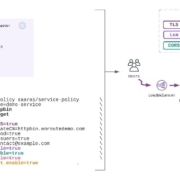Envoy Gateway est un service proxy open source qui fournit une connectivité sécurisée et un routage intelligent pour les applications Kubernetes. Il est nécessaire pour assurer la sécurité et la disponibilité des applications.
## Envoy Gateway : Faciliter la configuration d’Envoy proxy comme passerelle API et contrôleur d’entrée
Envoy Gateway est un projet qui a été créé pour faciliter le codage des applications multicloud. Il est basé sur le proxy Envoy, qui est le plan de données du service mesh Istio. Envoy est utilisé pour gérer le trafic est-ouest (communication de service à service à l’intérieur d’un centre de données). Cependant, pour que Istio gère un réseau d’applications multicloud, Envoy a été configuré comme un proxy côté pour gérer le trafic nord-sud (trafic entrant et sortant des centres de données).
Il a été constaté que les développeurs d’applications trouvaient difficile de configurer le proxy Envoy en tant que passerelle API et contrôleur d’entrée. Cela prenait beaucoup de temps, ce qui a conduit la communauté à utiliser l’API Gateway Kubernetes en tant que partie du projet Envoy et à finalement construire Envoy Gateway. Envoy Gateway est conçu pour être facilement configurable et peut être utilisé pour fournir des fonctionnalités telles que la sécurité, la mise en cache, la journalisation et la surveillance des API. Il peut également être utilisé pour fournir des fonctionnalités telles que la mise en œuvre de règles de routage, la gestion des certificats TLS et le contrôle d’accès.
Envoy Gateway est un outil très pratique pour les développeurs d’applications multicloud. Il permet aux développeurs de configurer et de gérer facilement leurs applications multicloud. Il permet également aux développeurs de mettre en œuvre des fonctionnalités avancées telles que la sécurité, la mise en cache, la journalisation et la surveillance des API. En outre, il permet aux développeurs de mettre en œuvre des règles de routage, de gérer les certificats TLS et de contrôler l’accès aux applications. Enfin, Envoy Gateway offre une grande flexibilité et une grande scalabilité pour les applications multicloud.





